
My Role
I worked on the project as a freelance UX consultant. I led all matters related to the UX/UI design of the website. I worked alongside another UX Designer and a visual designer to help produce the final designs for the project.
Research
First thing that I did was to try to validate their business idea. They’ve conducted an online survey to see whether there really was a need and interest for the service in the market but I felt we needed to go deeper. Because of the limited time and resources, a full on user research wasn't really a viable idea.
What I decided to do was gather friends and people I know that've used similar digitalized services like Gojek, Tokopedia at the time and conducted short interviews with them about the concept. It wasn't really ideal, but some insights are better than no insights. I then try to map out their current process for getting tech support and identify existing pain points.
The Insights
Most people fix their gadgets through 2 channels: Authorized service centers or Third-Party (Unofficial) repair shops. Authorized service centers will always be their first choice. It gives customers peace of mind that they are getting genuine hardware and if anything goes wrong with their repairs, they can simply go back.
The problem is they are generally considered quite expensive and time-consuming. They are only available in certain areas in the city and if you don’t happen to live nearby it can be quite difficult to get there. They are also infamous for having very long wait times for repair.
For all of the above mentioned reasons, sometimes people will use “Unofficial” repair shops. They are generally considered to be cheaper, faster and more convenient to use. There are major pain-points related to these services though and since Klikfix would fall under this “Unofficial” category, they would have to remove all of these user barriers if they wanted to succeed.
I noted down some key user values for in regard for tech repair services:
Genuine Hardware
One of the biggest pain-points of using third-party repair shops is not knowing whether the parts they are using are original or of the same quality. Third-party repair shops are mostly unregulated and will advertise that they use original spare-parts. Most customers will not be able to tell whether that is true or not.
Fixed and Transparent Pricing
Third-party repair shops does not operate with fixed prices, most of the time you have to bargain or negotiate for a good price.
Service Quality
Most customers try to avoid using third-party repairs because they cannot guarantee that the issue with their gadget is actually fixed once it leaves the shop.
Good Reputation
Because most people can’t tell the quality of the repair service until it’s too late, they prefer going to shops that’s been recommended by a friend or have a good reputation in the industry.
Design Process
After gathering all the insights, I began mapping out the journey a potential user might go through to fix their gadgets and identifying any pain points that might occur. I then start to conceptualize possible solutions, taking into account different user mindset in this process.
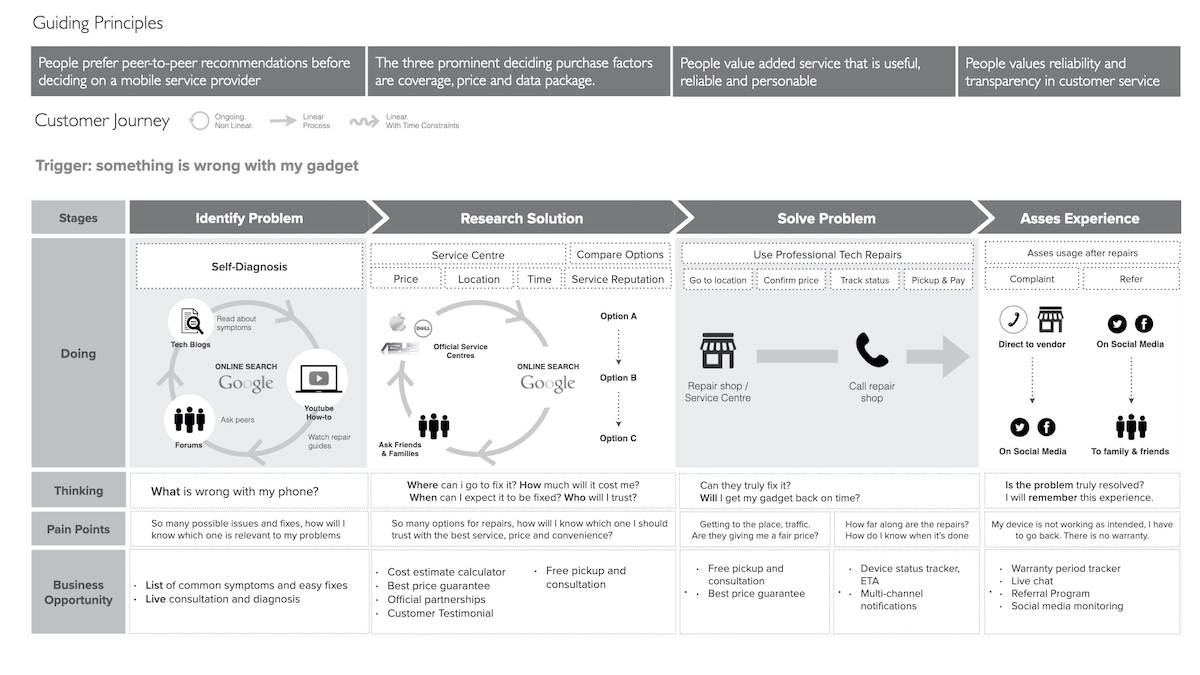
User Journey Mapping
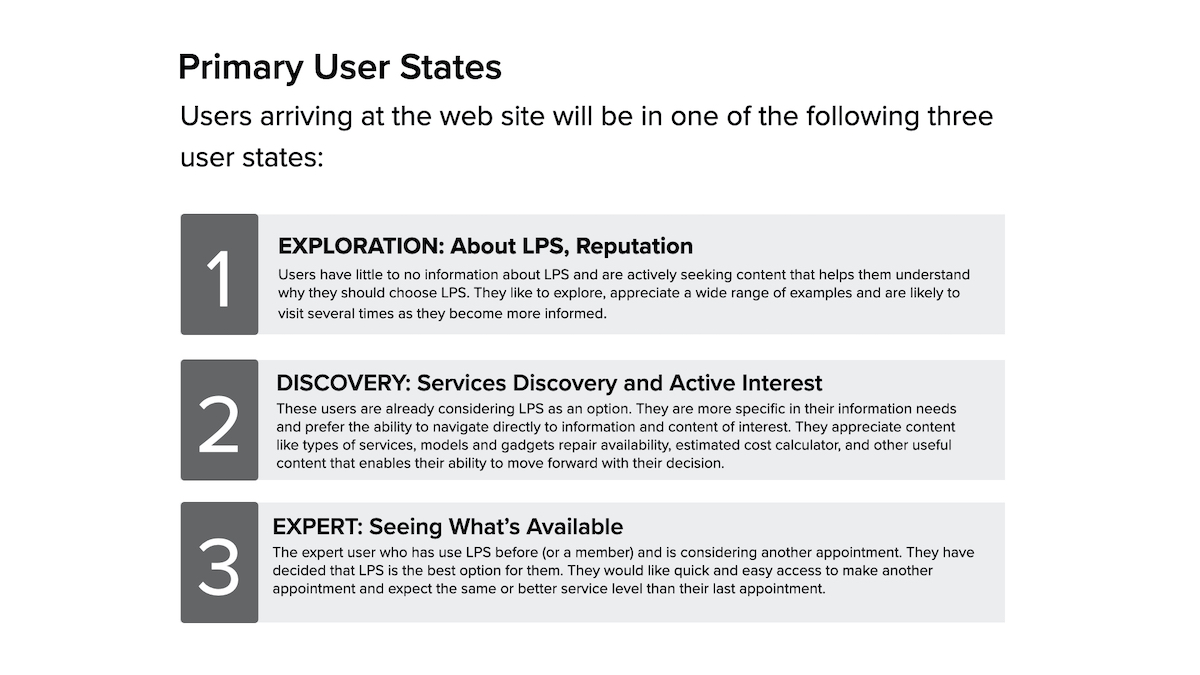
User Mindset
From here, we pretty much went fully into production mode. Starting with the content structure of the website, then straight onto user flows and wireframes so we can iterate faster through ideas.
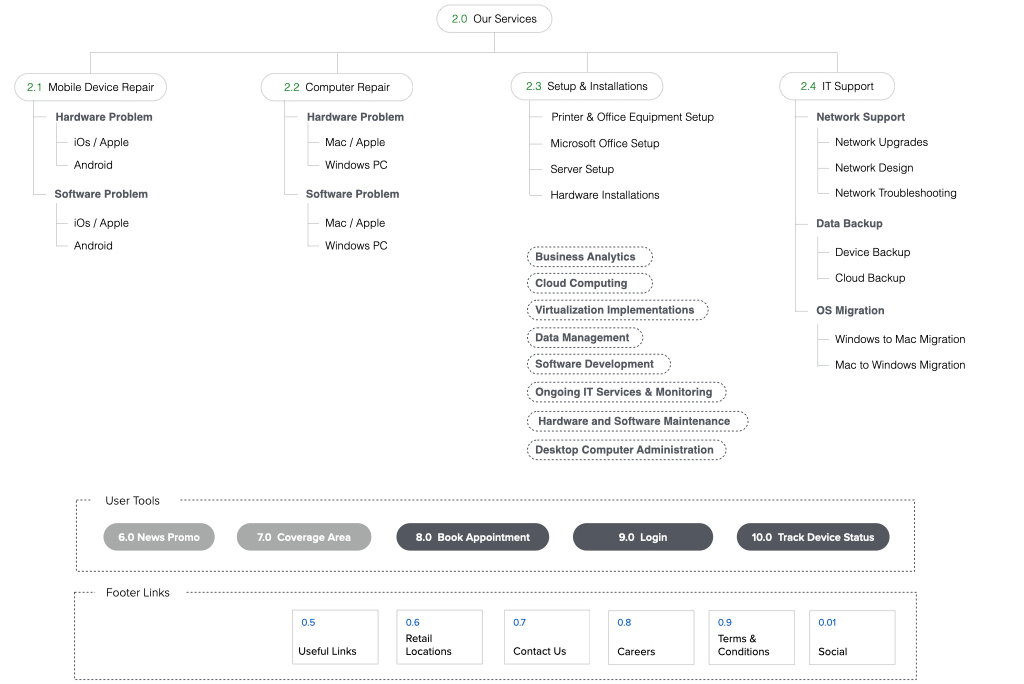
Website Structure (Sample)
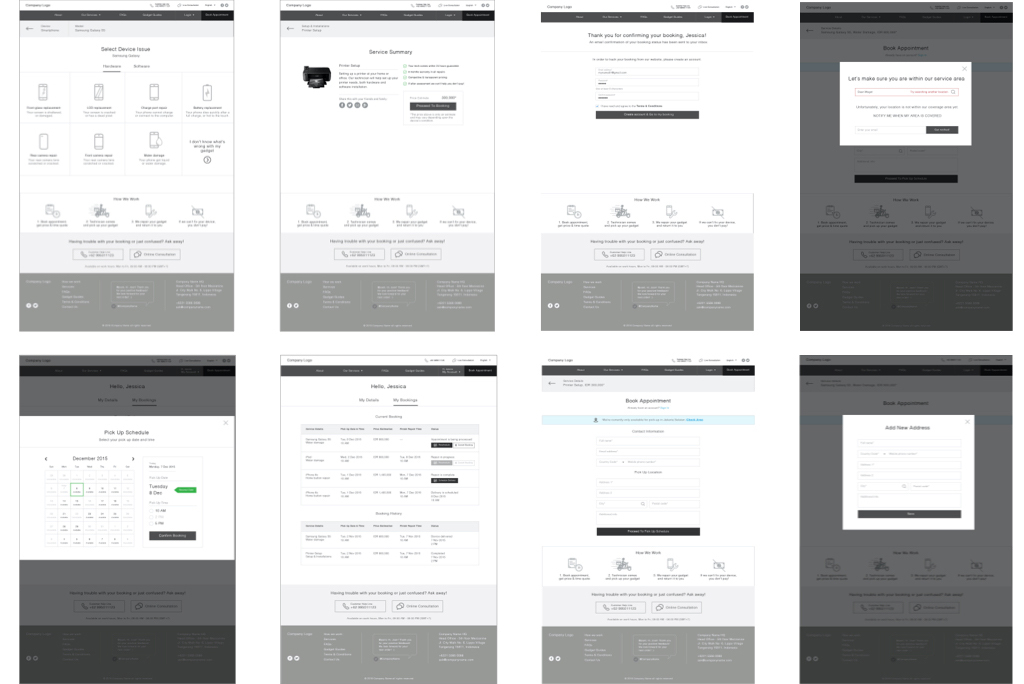
Klikfix Desktop Site Wireframes
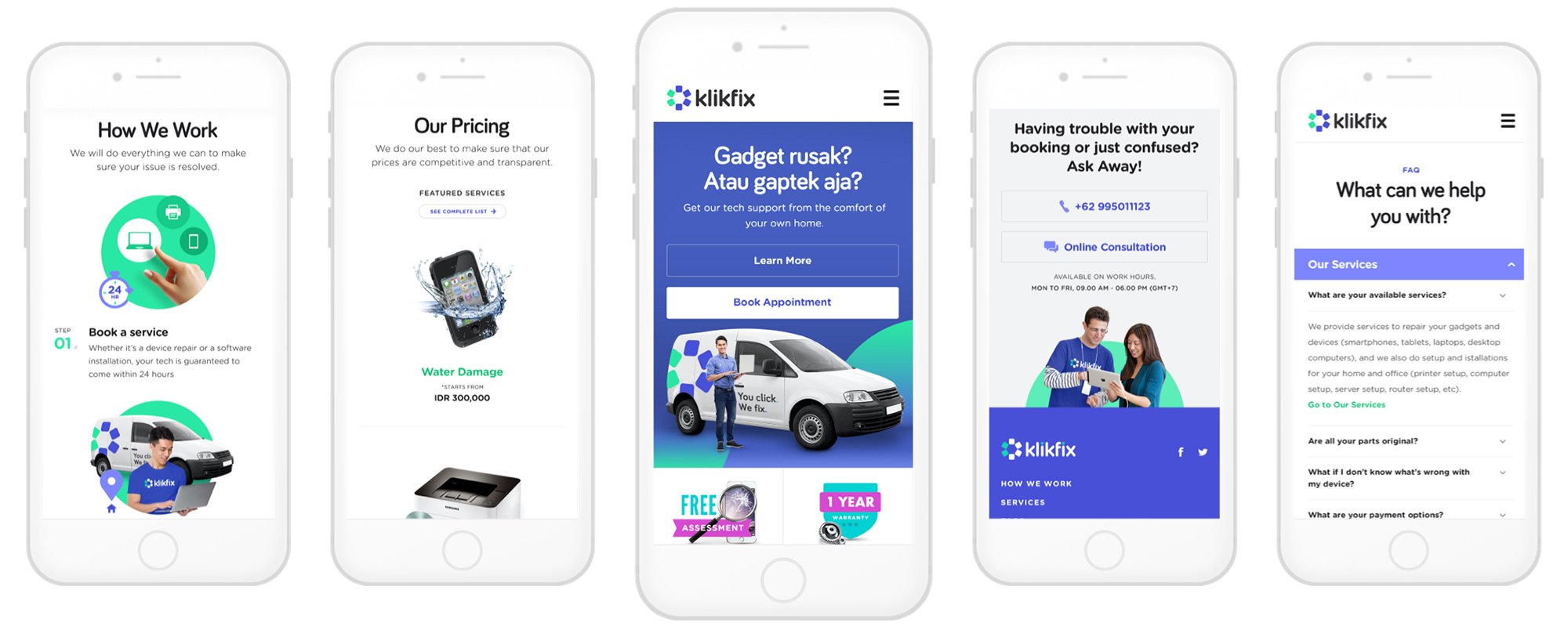
Klikfix Mobile Web Design (Sample)
Usability Testing
Once we finished the most of the designs for the website, usability testing was crucial to check the validity of user experience; making sure potential customers can achieve their goals by using Klixfix’s mobile and web application.
Our Testing Goals
Determine how well first time users understood the service and complete key tasks in the website.
Gather additional insights about what influence booking decisions when using Klikfix for the first time.
Map any other usability issues to make sure the Klikfix experience was frictionless and intuitive.
Determine overall user impression on the service and see if they have any concerns or doubts about using Klikfix.
We tested a total of 20 participants, split equally between the mobile and desktop version of the website. The core tasks that we wanted to focus on was booking an appointment and getting help from customer service.
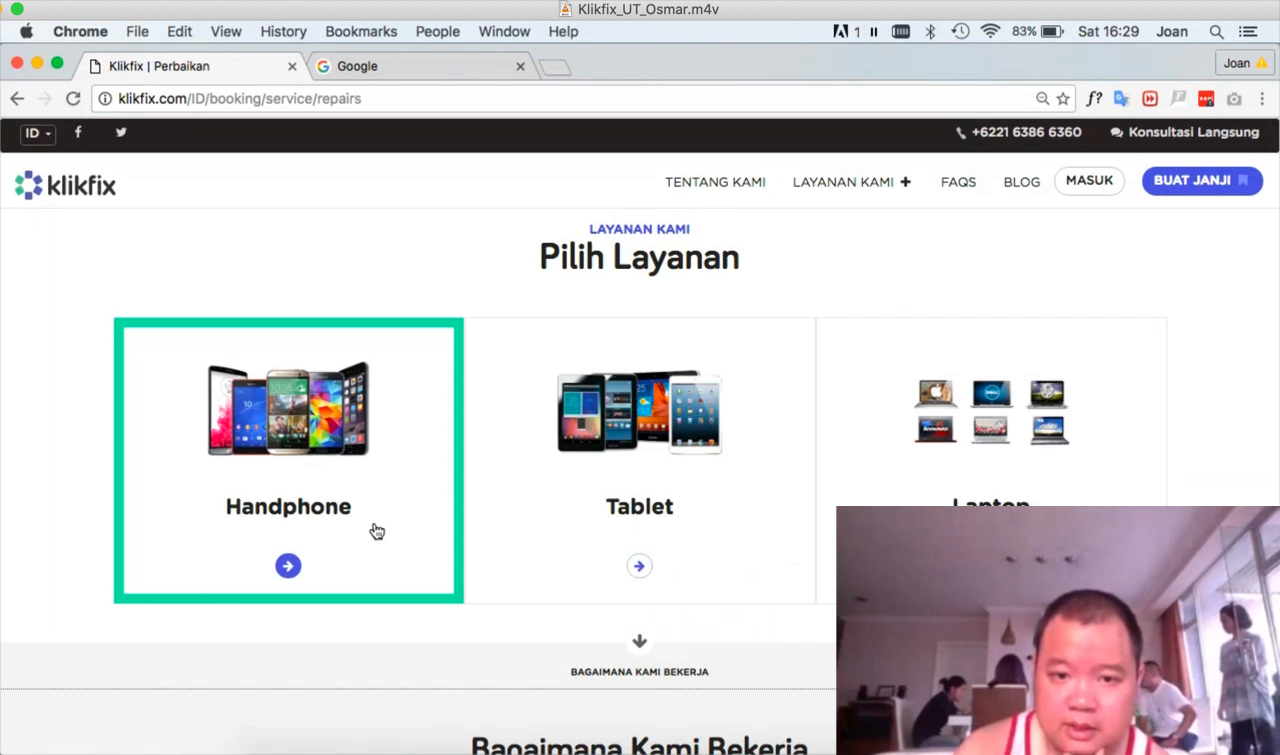
Desktop Usability Testing

Mobile Usability Testing
Once the actual testing round was done, we listed down all the issues and apply a severity ranking to each user problems:
Low
A low severity issue is an issue that does not prevent successful completion of the scenario.
Medium
Medium are issues that sometimes prevent successful completion of the scenario
High
High are issues that serves as an absolute roadblock to the successful completion of the scenario

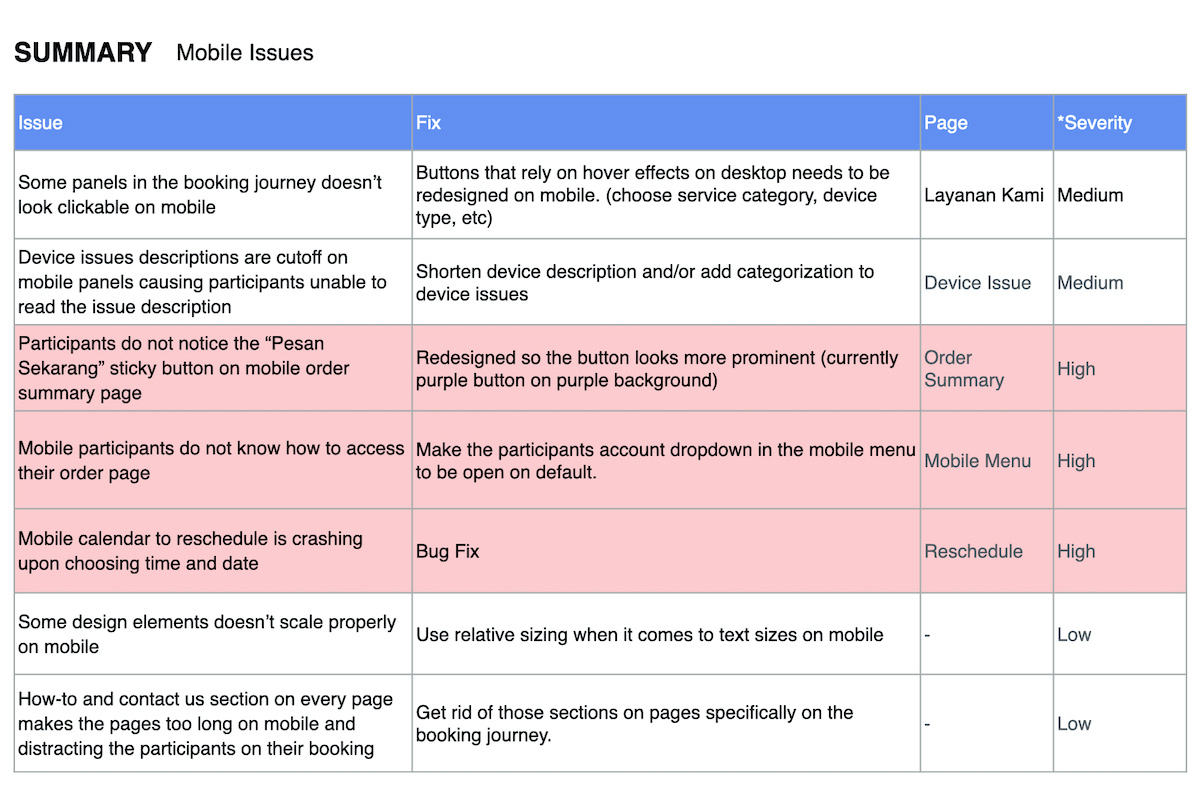
Beyond the specific interaction and usability issues, we found that most participants willingness to try using Klikfix as service will depend on a few key takeaways:
Mobile issues are the most urgent
Klikfix mobile site needs the most work in terms of design quality, bugs and failed to load data crashes
Fixed pricing, warranty, spare part quality needs to take center stage
These are all the things that our participants care about and these are all the things that need to be explained in more details.
Content and description copy that is too long will not be read
Participants in general didn’t read paragraphs that are too “texty”. All the detailed explanations are mostly unnecessary and drowns actual user critical information.
Trust comes from reviews and brand presence online & offline
All participants say they would only use klikfix when recommended by someone they know.
Final Note
This case study was created to describe the work that I did with Klikfix in 2016. My work with them concluded shortly after the usability testing.
As of 2021, it seems as though Klikfix is no longer operational. Based on the comments on their social media (which is still up at the time of this writing) and google reviews, most of which are negative, it seems they did not / stop meeting the customers expectations that we uncovered time and time again in all of our research and testing
I won’t try to speculate on internal business decisions and operations, I just thought it was an interesting development of a project I once believed in. I also thought it would make for a good case study of what could happen when a business ignored early design feedback and stopped putting their customer's needs first.
Finally, as always special thanks to the amazing people that help me with this project.